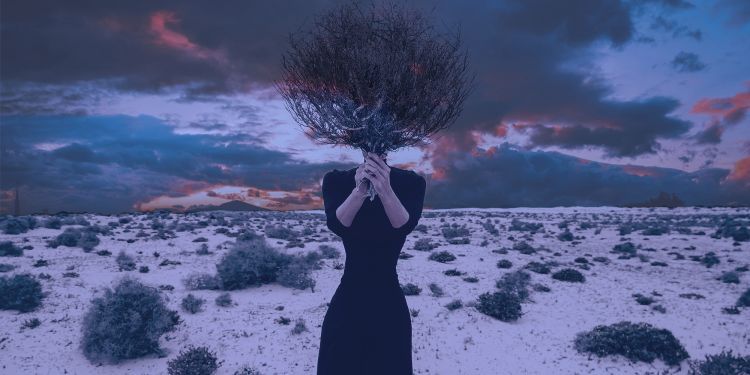Breadcrumb navigation
In Conversation with Stephen McNeff

In Conversation with Stephen McNeff
Ahead of the world premiere of Stephen McNeff's new opera, A Star Next to the Moon, we sat down with him to hear about where the inspiration came from, the process of writing the opera and how the music reflects the story.
Could you describe the plot of A Star Next to the Moon?
The basic plot of A Star Next to the Moon is relatively straightforward. It follows the story of a man called Juan Preciado, who as a deathbed promise to his mother, goes to a town called Comala in search of his father. The surprise is, when he reaches Comala, he discovers it is a town in ruins, that turns out to be inhabited by a strange group of people.
The story then gets a little more complicated. In parallel, there’s the story of Pedro Páramo, a tyrannical landowner whose story is revealed as we go through the opera. Eventually, Juan and Pedro’s stories come together in a very strange and mysterious way, which isn’t really revealed until the end of the opera.
You’ve been working on A Star Next to the Moon for around 20 years. Could you tell us a little bit about where the inspiration for the story came from?
This opera actually has a long history. I first became aware of the novel Pedro Páramo (on which the opera is based) when I was invited by Ana Cervantes, a Mexican American pianist, to write a short piece for a CD she was producing, which as based on the novel. She invited a group of composers from all over the world, and we were all very lucky to be invited to Mexico for the premiere. It was actually on the long coach trip from Mexico City to the hotel, that I read the novel and it immediately struck me as something that would suitable for an opera.
I played around with the idea, and then had the opportunity a few years later of workshopping some scenes as part of the Royal Opera House's Initiative. We ran into some difficulties because the piece was still in copyright. After several negotiations and a few small concessions, we were able to gain the rights. One of those concessions was that we didn't directly use the novel's name and Aoife Mannix, the librettist, came up with A Star Next to the Moon, which was one of Rulfo's original titles for Pedro Páramo.
How have you found working directly with the students? I understand you’ve been shaping the different parts to fit their voices.
The great thing about working at Guildhall is that I had the opportunity to meet the students who were going to be in the opera, in their first few weeks on the opera course. Although we hadn't cast A Star Next to the Moon then, I was able to write it with the people who were going to perform it, in mind. It's an ideal way of writing new work, because you know what kind of people are around.
Back in October 2022, Dominic and I sat down and discussed which parts would potentially work for which students and I was able to take that knowledge away with me and write the opera. At the start of the 2023 Autumn term, we were able to make the vocal scores available to everybody. We then had students study the music a little, by which point we'd cast it along with Martin Lloyd Evans as director and I was able to spend a week again trying it out with people.
We obviously double cast for a number of the roles, so I could make adjustments for individuals. So there's a number of passages in the opera which are sung differently. It also gave the singers the opportunity to get to the know the pieces, so by the time we got to rehearsals they knew what they were dealing with.
A Star Next to the Moon is based around a man’s journey to his haunted hometown in search of his father. How does the music reflect this story?
Pedro Páramo is often described as a ghost story and I was very conscious of wanting to write music that wasn't ghost story music. In fact I think of it much more as a character driven opera with an eerie background. Aoife Mannix, the librettist, and I had talked a lot about this story and what kind of cultural references there were. We’re both Irish and we talked about how cross cultural it is. Although it deals with Mexican culture and how the dead are always with us, it’s the same in Irish culture and many others too. I was primarily interested in writing the music in a way that helped to explain the characterisation and individuality of people. But, then to do what opera does so well, in bringing them all together and binding them with the music. I also wanted to look for opportunities for the singers to shine and for the chorus to help illuminate the story.
A Star Next to the Moon runs from 26 February - 4 March, in Silk Street Theatre. Tickets are available here.